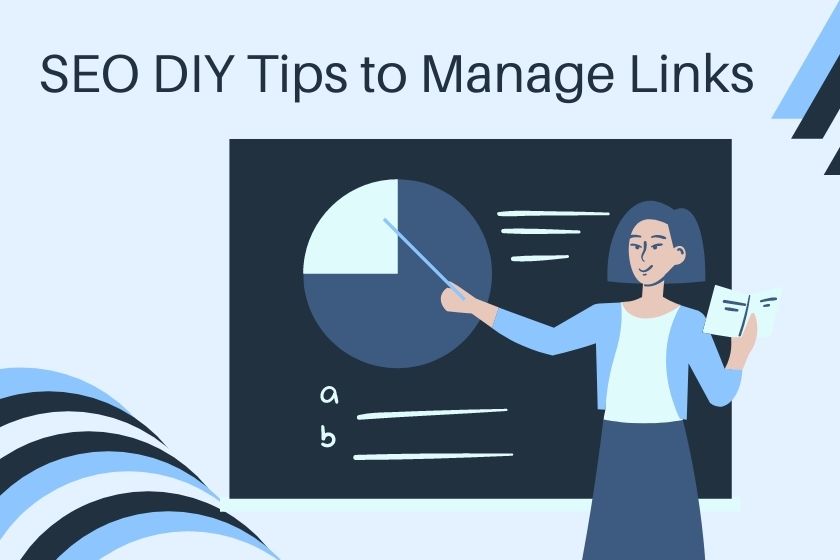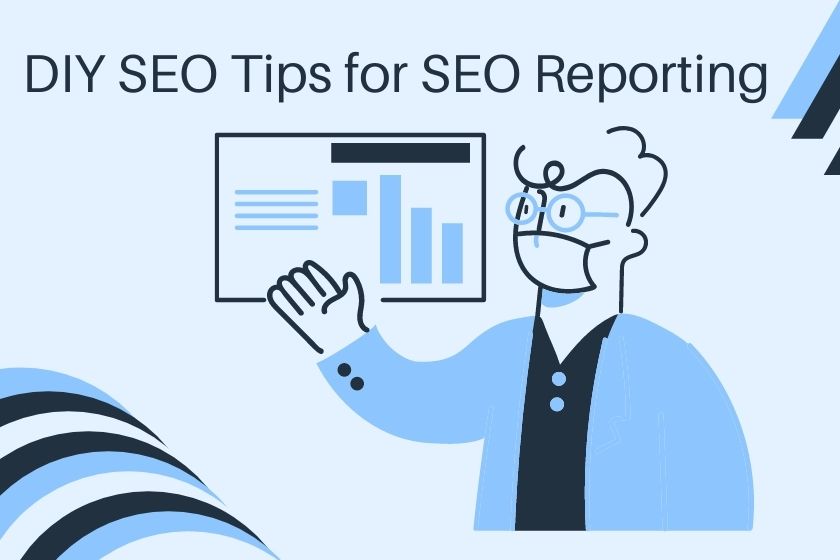SEO can be overwhelming as there are many moving pieces. But if you know exactly how you can do it yourself, a complete checklist, it becomes easier.
Even though you can hire an SEO agency to outsource your work, it requires a lot of planning and you are never quite sure how it will turn out 6 months later. So before you hire an agency, try these 20 DIY SEO tips for small businesses.
Let’s dive in.

1. DIY Keyword Research Techniques
Keyword research is the core of SEO – everything begins with search intent. You want to meet the search intent to increase your chances of being served on the first page of Google.
Often, businesses target keywords that are too competitive. For instance, if you see top competitors ranking for a keyword and filling up all the spots on the first page, it’s best to avoid that keyword because you have no chance to rank!
You need to target long-tail, low-competition keywords. Once you start ranking for long-tail keywords, you get some traffic. This signals Google that you have quality content, and that you should be ranked for shorter keywords too.
For example, if you want to target the keyword – Living Room Furniture, but find it too competitive, you can target a longer keyword like – Quality Living Room Furniture or Best Living Room Furniture in Austin or Affordable Living Room Furniture. Once you get traffic for these long-tail, you will rank for shorter, more competitive keywords like Living Room Furniture.
How to DIY keyword research?
There are many keyword research tools available online but none of them have the right data for search volume. You can end up getting 0 traffic for a keyword that, tools claim, has 1000s of monthly searchers; while you can get hundreds of visitors for keywords that supposedly have 0 searchers. No tool provides accurate search volume.
You should rather use Google for keyword research. It has all the data, but never shares it publicly. Well, not directly. You can, however, do keyword research on Google SERP (Search Results Page.)
Another tool that can make keyword research faster is – Answer the public. This tool serves tons of keywords based on the main keyword you want to target. They are segregated based on different questions people ask and different alphabets people type after the main keyword. This tool can be very helpful in meeting search intent.
What if the intent of search is to find your brand? It’s called brand search and it generates traffic that converts excellently!
2. Use Keywords in Key Spots of the Page
Once you identify the right ones, place keywords at the right places on your page – Title, Header tags, and URL.
For example, if your primary keyword is: bake a carrot cake, you have a catchy title – How to bake the perfect carrot cake in 1 hour. Your URL can be https://website.com/bake-carrot-cake-fast.
You should also insert these keywords in text but make sure you don’t overdo it. The practice of putting so many keywords that it seems unnatural, is called keyword stuffing. It is a black hat SEO technique and highly detrimental to your SEO efforts. In fact, it can get you a Google penalty.
Plus, it forms a poor reading experience for your readers. There’s no golden ratio of keywords to word count, but if you insert keywords contextually, you’ll be fine.
How to do keyword placement yourself?
Even though this part is intuitive, it takes time to get the intuition in place. But till then, give Yoast SEO a shot. It is a decent tool that takes your primary keywords and tells you in which spots it must be placed.
It gives you a list of what you got right and how you can improve. For example, in the below image, you can see the complete checklist of on-page SEO items split into Red, Orange, and Green sections.
Red – It’s crucial for better SEO
Orange – These factors do have an impact but they are not critical
Green – Good job! You got them right

There are many other tools like rank math and the all in one SEO plugin, but none of them live up to modern SEO standards, so take the suggestions with a pinch of salt.
3. Find Content Gaps
There is already a ton of competitor content in your niche. Google has many options to serve on the first page of search for every keyword it registers – it does not need more of the same content. It rather needs new content.
How to find content gaps yourself?
You can find content ideas from the Google search page and the Answer the public tool – as were discussed in the keyword research section. But identifying the right topics from the list is the key.
The goal is to identify content pieces that do not have accurate search results and get a featured snippet from it. For example, if a keyword has forum results ranking in the first page, or results that only partially match with search intent, that might be a good topic to cover. Often, those keywords are long-tail: at least 3 words long.
Sure, if the content is not covered by any blog, it probably has a low search volume. But you need those blogs to start rank on Google, to start getting that traffic to trickle.
4. Blog Consistently
Many small businesses completely ignore their blog or do not recognise its true potential. A blog can help you rank for multiple keywords. It can also drive a lot of traffic to your website which you can convert into leads and then clients. In addition, it can also be a passive source of income in the form of Ads, affiliate marketing, informational products, etc.
Any website that updates regularly and grows in size every week is trust-worthy in Google’s eyes. The more and the faster you publish, the faster you rank for different keywords. But you must do it consistently..
For example, we have a complete section dedicated to backlinks, we wrote a blog every 2 days and started getting some traffic for related keywords. However, we were inconsistent with blogs related to keyword research which impacted our traffic for related keywords.
How to blog consistently?
- Create a content calendar and record which topics need to go live on specific dates. Prepare your calendar for at least a quarter.
- Hire a freelancer if you can’t write yourself. You can use Fiverr to find them, or Clearvoice for better quality (and higher price.)
- Give them a list of keywords and let them work on it.
5. Avoid Keyword Cannibalization
Keyword cannibalization occurs when you have two or more blogs on the same or similar topic. This confuses the Google algorithm as to which page it should serve. Essentially, your pages are competing among themselves, thus losing traffic to another website. Ideally, you do not want 2 pages to rank for the same primary keyword.
If you are writing two blogs with keywords similar to each other, you must rephrase the keywords in a way that they don’t lose the meaning but do not confuse the algorithm either.
How to fix keyword cannibalization yourself?
If you already have an article title on How to boost sales for B2B Saas? You may want to avoid an article on Top 10 tips to boost B2B sales. If you have more content, sew it into the existing article instead of creating a new one.
But if you already have two pages that are similar, you must:
- Check on Google Search Console which of the two pages is performing better.
- Add a canonical tag on the lower performing page to the higher one. This tag indicates which of the two pages search engines must pick while ranking content.
To add the canonical tag, you can go to the ‘Advanced’ field in Yoast and paste the link to the primary page there.

The above image highlights how you can do that.
There’s more to SEO writing than keyword optimization and finding content gaps.
Access this guide to become a better SEO writer.
The first set of DIY SEO tips covered the on-page aspect. Let’s move to the next one.

6. Interlink Your Blogs
Ideally, you must add internal links to every blog post you write, but it becomes even more relevant once you cross the 50 posts mark. Interlinking tells Google which of your pages are most important.
For example, if one of your pages has internal links from 30 other pages then it’s a strong signal to Google that it’s more important than a page that just has 10 internal links. The former has a higher page rank.
Also internal linking helps you transfer link juice – If one blog post gets a backlink, you can share its effectiveness with other blog posts through internal linking. In addition, internal linking will help you divert traffic to your money pages, which includes sales pages, product pages and blog posts with affiliate links.
How to DIY internal linking?
In your WordPress editor, select the phrase that you want to use as the anchor text. You will see an option to add a link. The below image shows an example.

While adding internal links, make sure they are relevant. Add links only to relevant anchor text – do not add them randomly.
7. Build Backlinks
Backlinking is probably the most important yet most taxing aspect of SEO. It takes time, effort and money to build backlinks. Backlinking is a stamp of approval from websites that Google already trusts. The more backlinks you build from quality websites, the better is your domain authority.
How to DIY backlinking?
Often, outreach is seen as the only way of building backlinks. But it’s too much effort for too little a reward. The better way to build backlinks is by creating top quality content that people find useful and link to it. Such backlinks are called natural backlinks.
Yet, in case you want to try outreach anyway, you must learn how to identify the right website for guesting posting and what you can expect with the broken link building method.
You can use the Ahrefs backlink checker for DIY off-page SEO. It is a free tool shows what backlinks you and your competitors have.
8. Remove Harmful Backlinks
Google constantly upgrades its algorithm to reduce spam. With the latest link spam update, Google has pressed down on websites with poor quality backlinks, those websites lost a bulk of traffic. It’s more important than ever to get rid of harmful backlinks.
How to DIY bad backlink removal?
To do that, you first need to find all your backlinks and weed out the bad ones. You can find your backlinks on Google Search Console. Head over to the Links tab and scroll down to the Top linking sites section.
After identifying harmful links, reach out to the owner of the website to remove it or disavow the link.
9. Use Social Media to Improve SEO
Social Media can be a great source of traffic. Viral posts drive huge traction which signals Google that your content is of top quality. This, in turn, boosts your Google rankings and even more organic traffic.
Often, the posts that get huge traffic from Google also get tons of social shares. If you craft quality content, it will get shares and backlinks, irrespective of the platform.
To do that yourself, try this guide to optimize your social media accounts for SEO.
We conclude the linking factors that go into DIY SEO tips for small business.

10. Optimize Your Page Speed
Page Speed is an important ranking factor. The longer your website takes to load, the more people leave before visiting a page. With every second of delay, your conversion rate drops drastically! Ideally, you should aim for a page load speed of 2 seconds.
Even though improving page speed involved modification to the website backend code, you need not know how to code – WordPress plugins can do that.
How to DIY page speed optimization?
There are many measures to optimize page load speed. One of them is reducing the image size, which we will discuss next, other methods are trimming down your code, minimizing the usage of animation on web pages, choosing a better web host, etc.
11. Use Light Images
Images take up a lot of disk space and slow down your website. It’s imperative that you reduce your image size to reduce the page size, this will reduce the load on servers and provide a faster loading page.
For example, if you save your images in JPG format instead of the PNG format, you will reduce the image size by up to 90%! This alone can boost your website speed by many seconds.
12. Fix Crawl Errors
Crawl errors are the accessibility issues reported by search engine bots. These errors make for a poor use experience. For example, if a searcher finds your page on page 1 and clicks on it, they will be disappointed if the page is broken. Google needs to find and remove such links, and it does a good job at it.
How to find crawl errors yourself?
Crawl errors destroy your ranking and traffic, you need to fix them and keep your website healthy. You can find them in the coverage tab of Google Search Console. You can also set up a free account with Ahrefs and get regular audit reports in your mailbox.
13. Minimize Plugin Usage
Plugins are huge chunks of code that interact with the code of your website. The CSS/JS code occupies a lot of disk space, slowing down your website.
When you minimize plugin usage, you can avoid extra lines of code that will save you on page speed. Use plugins sparingly.
14. Optimize for Mobile
In modern times, people are accessing the internet on their mobile phones. They prefer to find businesses quickly, find directions and call them.
But serving content on mobile phones requires special focus. You need to make content readable, clickable, and more importantly – visible on tiny screens. Also, pages load slower on mobile phones compared to desktop, you need to optimize for mobile page speed.
But most importantly, you must ensure that your website is responsive – it should render properly on mobile phones and tabs. If you use WordPress, this task becomes easy.
Alright, we covered the DIY SEO tips for small businesses under the technical SEO umbrella, lets move to the next section.

15. Set-Up Google Analytics
Google Analytics is a powerful free tool that gives a detailed picture of your website performance. It shows you who is visiting your website and how you are acquiring your audience.
You can generate reports on pages that are performing well, sources that bring the most traffic, the geographic location of your audience, and more. You can even set up and track goals in Google Analytics.
This tool will help you with on-page and technical SEO analytics.
16. Set-Up Google Search Console
Google Search Console is a free analytics tool that tracks and reports your performance in Google search. It shows you what keywords you rank for, how much traffic each keyword generates, which crawl errors occur on your website, websites that link to you, and more.
You must set up GSC to track your websites performance on search engines.

17. Set up Google My Business GMB
GMB is a free Google tool that helps you engage local audiences. This tool captures your location details and serves your map pack listing to relevant searchers within an 8 kilometer (5 Mile) radius. You can also add your address, phone number, and website details.
If your business is relevant to local clients, it’s essential that you have a Google My Business profile.
18. Geo-tag your images
When you serve a local audience, you need to supply proof to Google that you are located in the said location. Geotagging is a method in which you can add geographic tagging metadata to your images.
These images give more proof that your business is located in the place you claim. This step will rank you higher in Google Map Pack listing. This is how to geotag your images.
19. Build Citations
Citation is a mention of your website anywhere online. It could be in blogs, online directories, etc. Every Name-Address-Place (NAP) listing counts as a citation.
The more quality citations you have, the higher you rank on Google Map Pack listings.
20. Generate Positive Reviews
Positive customer review signal EAT – Expertise, Authority, and Trust to Google. Next time your client is happy with the results, ask them to give you a positive review.
FAQs
Can you DIY your SEO?
Small businesses can can manage SEO themselves if they plan their approach strategically. However, it is not a one person job. It involves on-page, off-page, and technical SEO facets which needs different skill sets. You need not hire an agency immediately, but you might need to hire an in-house team for it.
Conclusion
These top DIY SEO tips will streamline your approach to SEO. You now have the complete SEO checklist – consider using it for your small business first, before you hire an SEO agency.


Thanks for this information but what are the best keywords research tools that someone can get for free?
Hi there,
Google search results page is the best place to find keywords that people actually search. We have a published a detailed post about it here – https://digigrow.co/2021/08/google-tools-for-keyword-research/
Tools like Ubersuggest and Answer the Public are free but there is a daily cap – 3 for Ubersuggest and 2 for Answer the public. Keyword everywhere is a decent extension available on Chrome and Firefox, you can use it to get a search volume estimate for keywords you discover using the remaining tools.